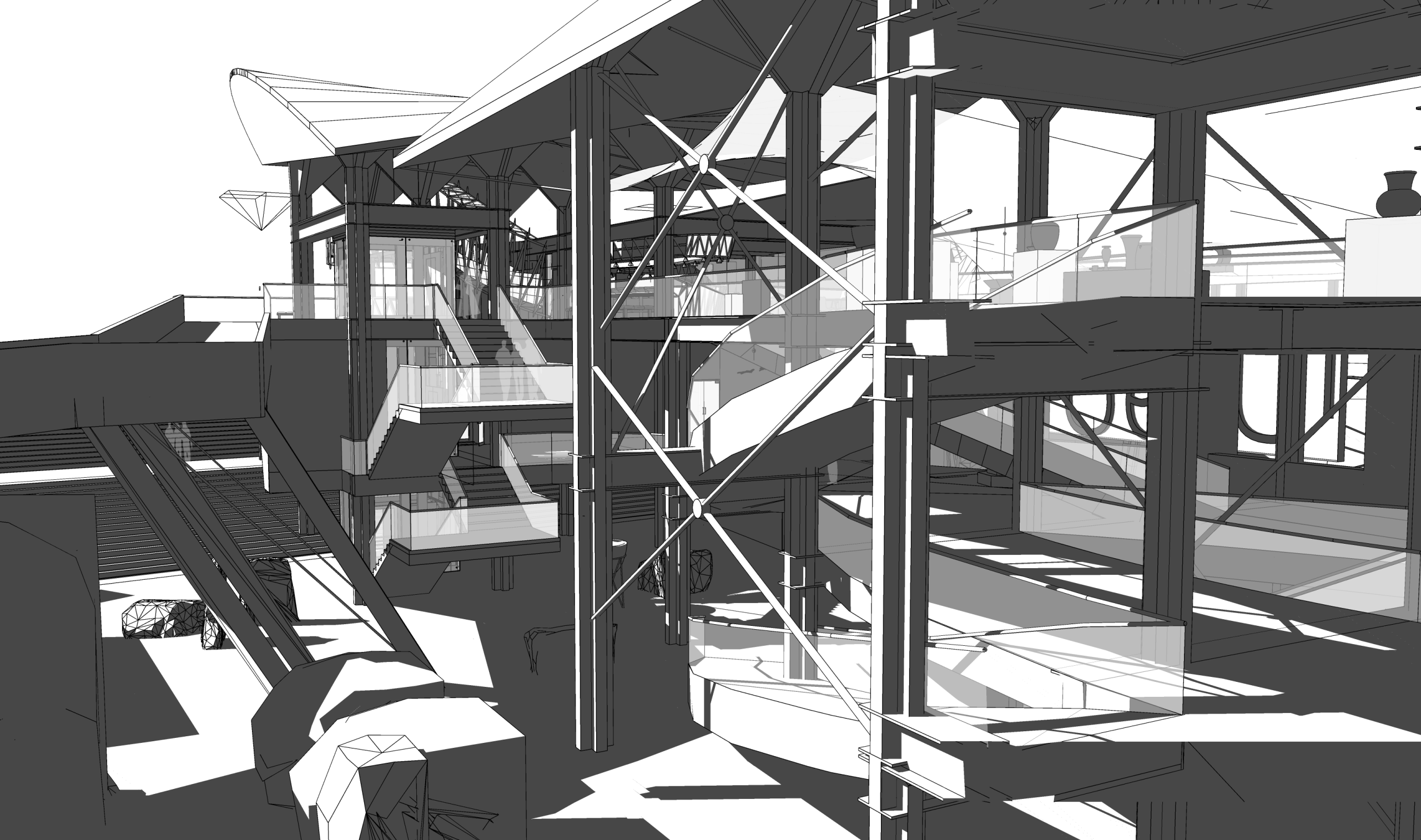
Human lifes, entire cultures of the Past, finally always laid down, down on Mother Earth, formed one layer after another, each compressed by the arrival of the followers. Stratifying into pages of the Big Book of human existance through times: the archeology.
This project is a light construction that doesn’t implant with a full surface foundation, it is built on light pillars onto a terrain of archeological excarvations. Its light weight structure is contrasting the huge ancient pillars of the Karnak temple.
The whole museum layers on top of an existing excarvation ground that continues to fonction as such, but becomes also an “archeological garden” connected to the building. It can be visited by a large ramp that integrates the garden to the museum circuit.
The construction is of opposite weight/mass nature then the heavy ancient ruins and the busyness of this touristic environnement. Half buried in the sand, like an grasshoper. An old biblical plague or a blessing? Or both? Copied from the insect, on the south side and the roof, shady scales cool the inner body and let the air cool. Like an insect’s wing a sail spans the museum’s main entrance, casting shade onto the waiting visitor.
Inside there is an large shaded open air portion of museum space connected to a restaurant and museum shop. Willingly a fissure is created in the sun roof, it acts like a point of invertion to the overall shape, and visually, gives a discontinuity to the total volume. The fissure acts like an adequately marked opening in the outer shell, functioning as an entry to the inside from both sides.































